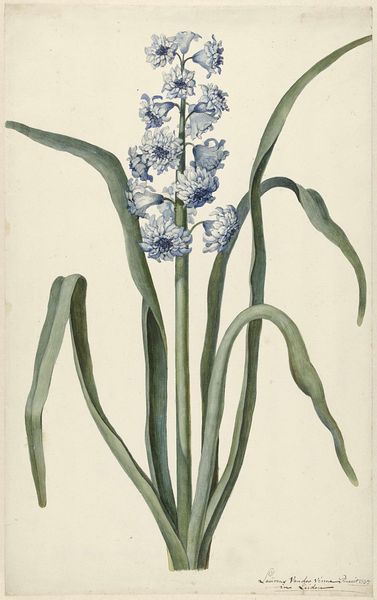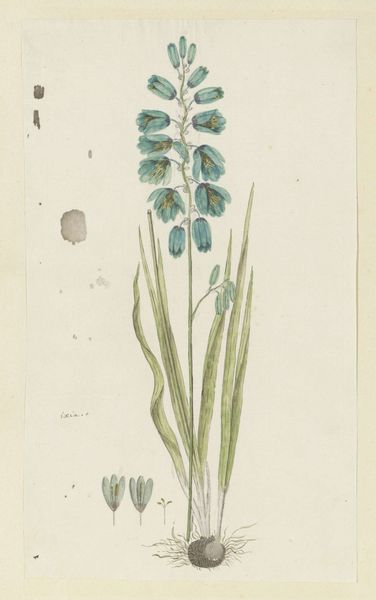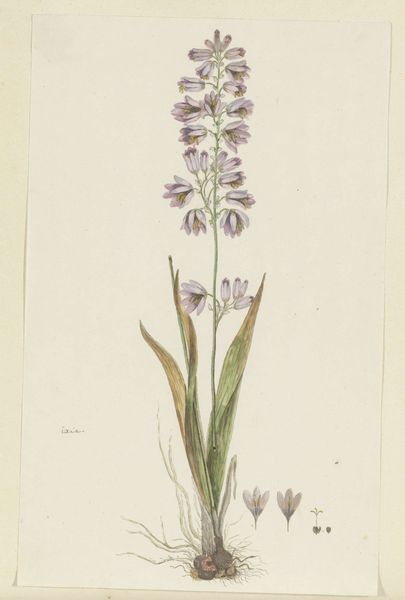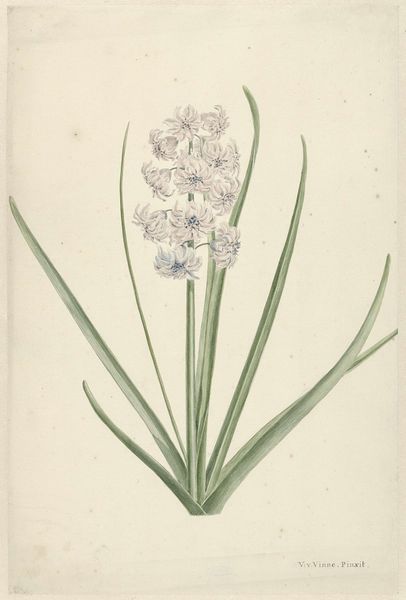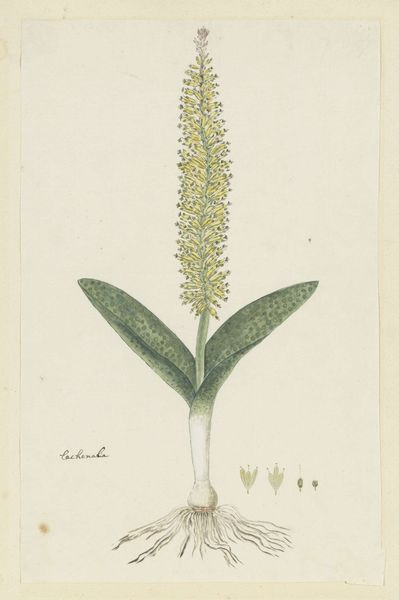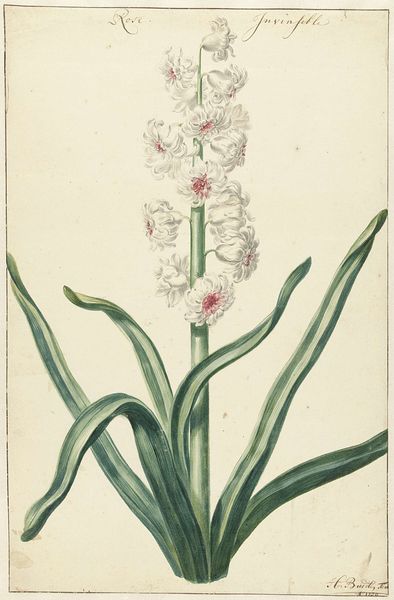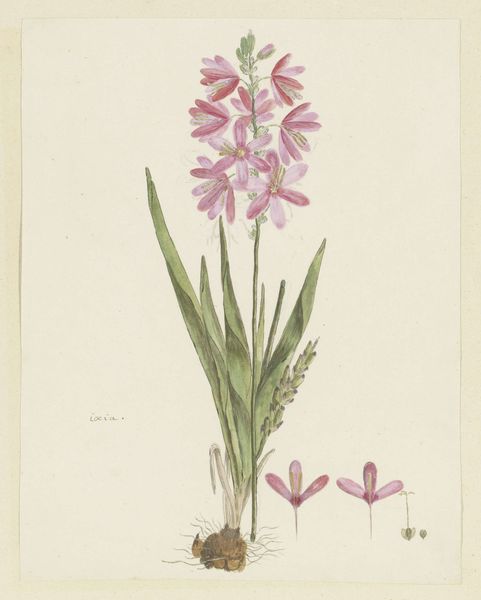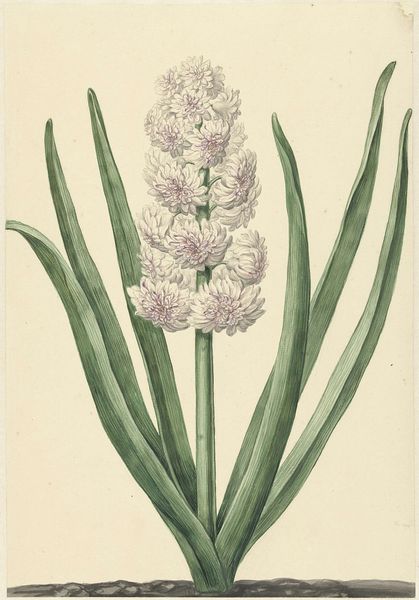
drawing, watercolor
#
drawing
#
aged paper
#
toned paper
#
light pencil work
#
pencil sketch
#
landscape
#
watercolor
#
watercolour illustration
#
watercolor
Dimensions: height 660 mm, width 480 mm, height 428 mm, width 262 mm, height mm, width mm
Copyright: Rijks Museum: Open Domain
Curator: Here we have "Lachenalia unifolia Jacq. (Hyacinth)," a drawing and watercolor on toned paper, attributed to Robert Jacob Gordon, dating possibly from 1777 to 1786. Editor: It’s rather lovely—delicate, even. The pale washes give it an ephemeral quality, as if this hyacinth exists just for a moment, captured mid-breath. Curator: The composition is deceptively simple, focusing on the plant’s verticality. Observe how the artist rendered the textures; from the smooth curve of the leaf to the tight, structured formations of the flower cluster. It’s a study in contrasts, no? Editor: Absolutely. And consider what the hyacinth has symbolized throughout history. In Greek mythology, it's associated with rebirth and beauty springing forth from death—the flower arose from the blood of Hyacinthus. One could almost interpret the light, airy rendering as a visualization of that transformation. Curator: Fascinating. Looking at the botanical precision here, I’m drawn to how the light pencil work subtly defines form and structure before the watercolour delicately layers translucent hues onto the bulbous form and singular leaf. Gordon uses this contrast to describe form with the upmost economy. Editor: Notice the almost clinical way the flower's anatomy is detailed separately on the side, hinting perhaps at the emerging scientific naturalism of the period alongside the more Romantic symbolism. The whole illustration whispers of nature being simultaneously investigated and revered. Curator: A truly apt observation. By displaying individual stamens and other parts, the botanical context elevates the work into something more scientific, yet is never dry in execution. The drawing and the watercolours are handled with exceptional subtlety and with acute sensitivity. Editor: This artwork invites a multilayered understanding, bridging science and myth, observation and feeling. A testament to the power of symbolic botanical representation. Curator: Yes. It reveals how formalism allows you to approach questions about context and content, in a kind of intertwined reading, informed and led by direct observation.
Comments
No comments
Be the first to comment and join the conversation on the ultimate creative platform.


